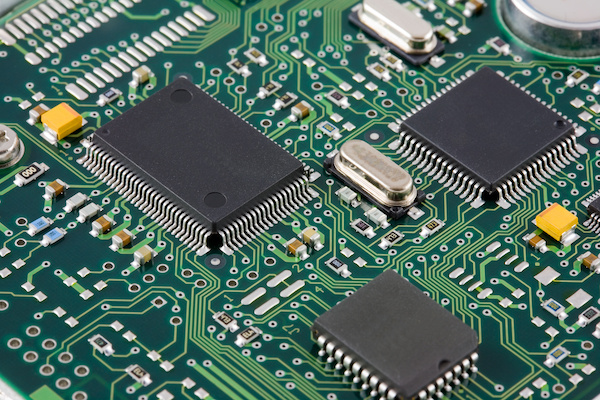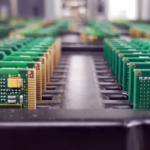Choosing the right printed circuit board (PCB) manufacturing partner is one of the most important supply chain decisions for companies producing electronic products. Selecting a PCB company with the right capabilities, quality, reliability, and technology expertise can make or break success when bringing electronic products to market.
This article profiles the top 10 PCB manufacturers globally that offer exceptional fabrication capabilities, experience in diverse end markets, and the technical expertise to deliver high-quality boards suited for next-generation electronic product needs.
The Leading Global PCB Manufacturers
1. RayMing Technology
RayMing is one of the most respected PCB manufacturers worldwide for its cutting-edge fabrication capabilities, strong quality culture, and exceptional customer service across a diverse range of end markets from consumer electronics to automotive, telecom infrastructure, IoT, high reliability aerospace, and more.
Some key facts about RayMing Technology:
- Founded in 2005, publicly traded company
- Headquarters and multiple advanced manufacturing sites across China
- Over 500 employees globally
- ISO 9001 and IATF 16949 quality certifications
- Facility security clearance for manufacturing defense and aerospace PCBs
- Comprehensive PCB technology portfolio: multilayer, HDI, flexible, rigid-flex, RF boards, quick turn prototypes
Core Competencies
- Complex high layer count PCBs
- Fine line/spacing 2/2mil capabilities
- Advanced packaging – BOG, uBGAs, 0.4mm pitch
- Flexible and rigid-flex PCB fabrication expertise
- Excellent design support from engineering team
- Strong focus on customer collaboration and program management
2. TTM Technologies
TTM Technologies is among the top tier PCB manufacturers worldwide with highly advanced technology capabilities and expertise fabricating the most complex boards. The company has a global footprint with manufacturing sites across North America and Asia.
Some key facts on TTM Technologies:
- Founded in 1998, NASDAQ listed company
- Headquarters in California, 10+ manufacturing sites worldwide
- 17,000+ employees globally
- Revenue exceeding $2 billion annually
- ISO 9001, AS9100, IATF 16949, and Nadcap certified
- PCB technologies including multilayer, HDI, flexible, rigid-flex
Core Capetencies:
- High complexity boards up to 56 layers
- Line width/spacing down to 2/2 mils
- Advanced RF materials and manufacturing expertise
- Defense, aerospace, and medical PCB expertise
- Strong engineering support and DFM practices
3. AT&S
AT&S is the largest European PCB manufacturer and one of the leading global producers of high-end PCBs, IC substrates, and embedded component PCBs. The Austria-based company has a strong presence supporting European automotive and industrial manufacturers.
Key facts on AT&S:
- Founded in 1991, listed on the Vienna Stock Exchange
- Headquarters and factories located in Austria
- Over 15,000 employees worldwide
- Revenue over €1.5 billion annually
- Key markets include automotive, medical, industrial, telecom infrastructure
- Certified to IATF 16949, ISO 9001, ISO 14001, and OHSAS 18001
Core Competencies:
- High layer count and complex HDI PCBs
- Advanced IC substrates and packaging solutions
- Rigid, flex, and rigid-flex PCB technologies
- Strong R&D and advanced processes like inkjet printing
- Excellent large program management
4. Zhen Ding Technology
One of the largest PCB manufacturers in the world, Taiwan-based Zhen Ding Technology provides advanced PCB production capabilities across Taiwan, China, and other Asia-Pacific global locations.
Key information on Zhen Ding Technology:
- Founded in 1980, listed on the Taiwan Stock Exchange
- Over $1 billion in annual revenues
- 13,000+ employees globally
- Manufacturing sites across Taiwan, China, Vietnam, Australia
- Diverse end markets: consumer electronics, computers, automotive
- Certified to ISO 9001, IATF 16949, ISO 14001, OHSAS 18001
Core Competencies
- High volume multilayer PCB production expertise
- Flexible circuit fabrication capabilities
- Excellent quality control and engineering support
- Rigorous process controls and automation
- Strong focus on environmental sustainability
5. Tripod Technology
Tripod Technology is a leading manufacturer of high-complexity PCBs supporting a diverse set of end markets including computing, 5G telecom infrastructure, automotive electronics, aerospace, and medical technology.
Key facts on Tripod Technology:
- Founded in 1990, publicly traded in Taiwan
- Main manufacturing operations located in Taiwan
- Over 5,000 employees globally
- Specializes in high layer count and HDI multilayer boards
- Rigid, flex, rigid-flex PCB fabrication expertise
- Certified to ISO 9001, IATF 16949, and ISO 14001
Core Competencies
- High complexity PCBs with 16-28+ layers
- Capability for flex and rigid-flex designs
- Technology expertise in networking and computing
- Excellent engineering collaboration and DFM
- Strong quality culture and process controls
6. Unimicron
One of the top 10 PCB manufacturers worldwide, Taiwan-headquartered Unimicron has an extensive global footprint with advanced manufacturing sites located across Asia, Europe, and North America.
Key Unimicron facts:
- Founded in 1990, publicly listed on the Taiwan Stock Exchange
- Over $3 billion in annual revenues
- 13,000+ employees located globally
- Diverse markets including automotive, telecom infrastructure, IoT devices
- Certified to IATF 16949, ISO 9001, ISO 14001
Core Competencies
- Leading provider of automotive PCBs
- Advanced IC substrates and packaging
- HDI and high layer count multilayer expertise
- Large scale manufacturing
- Rigid, flex, and rigid-flex PCBs
7. Shennan Circuits
Shennan Circuits provides advanced PCB fabrication tailored to meet the needs of high tech industries including communications, consumer electronics, computing, automotive, and aerospace.
Key facts on Shennan Circuits:
- Founded in 1989, publicly listed company in China
- Headquarters in Shenzhen, China
- Over 4,500 employees
- Multiple China factories certified to ISO 9001 and TS 16949
- Diverse capabilities from multilayer, HDI, flexible, rigid-flex PCBs
Core Competencies
- High layer count complex boards
- Fine spaces/traces down to 2/2 mils
- Flex and rigid-flex PCB expertise
- Strong engineering and DFM support
- Excellent quality culture and process execution
8. Nippon Mektron
Nippon Mektron (Mektec) is a global leader in flexible PCB fabrication for advanced applications in consumer electronics, automotive electronics, aerospace, and medical devices.
Key details on Mektec:
- Founded 1969, headquartered in Japan
- Publicly listed on the Tokyo Stock Exchange
- Over $3 billion in annual revenues
- Manufacturing sites in Japan, Thailand, Taiwan, Malaysia
- Certified to IATF 16949, ISO 9001
Core Competencies
- Top flexible PCB manufacturer globally
- High complexity flex and rigid-flex designs
- Fine features down to 0.2mm traces
- Laser via drilling expertise
- Tailored solutions for each application
9. Nan Ya PCB
A leading producer of PCBs, Nan Ya PCB specializes in high-end multilayer, HDI, and flexible PCB fabrication tailored to meet the evolving needs of cutting-edge electronics.
Key facts on Nan Ya PCB:
- Founded in 1983 in Taiwan
- Publicly traded company
- 10,000+ employees globally
- Extensive domestic and overseas factory network
- Diverse end markets including computing, 5G infrastructure, automotive
Core Competencies
- High complexity HDI and multilayer boards
- Flexible circuit fabrication expertise
- Excellent engineering collaboration
- Rigorous quality standards
- Strong expertise in cutting-edge electronics
10. Ibiden
Specializing in multilayer printed circuit boards, Japan-based Ibiden provides advanced PCB manufacturing technologies tailored for leading edge electronics in computing, smartphones, automotive, and telecom infrastructure.
Key Ibiden facts:
- Founded in 1973, listed on the Tokyo Stock Exchange
- Over $2 billion in annual revenues
- Manufacturing sites across Japan, Malaysia, Singapore
- Diverse capabilities: multilayer, HDI, flexible circuits
- Certified to IATF 16949 and ISO 9001
Core Competencies
- Leading edge PCB technology focused on miniaturization
- Excellent high volume manufacturing expertise
- Close collaboration with global technology leaders
- Rigid and flexible PCB capabilities
- Strong precision and quality culture
Key PCB Technology and Capability Checklist
Here is a checklist of the core PCB manufacturing technologies and capabilities to evaluate when selecting a PCB partner:
PCB Technologies
- Multilayer PCBs
- HDI microvia boards
- Flexible circuits
- Rigid flex PCBs
- RF/microwave PCBs
- IC substrates, advanced packaging
Key Capabilities
- Fine line/space of 2 mils or below
- Plated through holes versus blind/buried vias
- Maximum number of layers
- Minimum hole size
- Panel size handling abilities
- First pass yield
- Testing and inspection expertise
Secondary Processes
- Solder mask expertise
- Surface finishing capabilities
- Selective plating
- Laser direct imaging (LDI)
- Printed electronics capabilities
Quality
- IPC standards certifications
- ISO 9001/13485/14001 certification
- Clean room standards
- Attention to employee health and safety
Program Management
- Design support and DFM practices
- Engineering collaboration
- Supply chain coordination
- Response time and NPI support
Evaluating both the core PCB fabrication expertise as well as secondary capabilities and quality processes gives the full picture of a manufacturer’s strengths as a potential partner.
Factors for Choosing the Best PCB Manufacturing Partner
Here are some of the top factors OEMs and electronics companies should consider when selecting a PCB manufacturing partner:
- Technical expertise in the specific PCB technologies required for your product including HDI, RF, flex, etc. Look for extensive experience in your industry’s applications.
- Quality certifications such as ISO 9001 compliance demonstrate disciplined quality management and manufacturing expertise. IPC certifications provide specific assurances on capabilities.
- Manufacturing footprint suitable for production needs whether high volumes generated offshore or lower volumes onshore closer to engineering teams.
- Client focus – the dedication to customer collaboration, design support, and program management for smooth new product introduction and production.
- Equipment and capabilities – investigation of specific machines, technologies, tolerances, and expertise to meet product requirements. Audits provide helpful insights.
- Supply chain strength – evaluates sourcing relationships and capabilities managing challenges with part availability.
- Continuous improvement culture – regular investments to stay ahead of electronics industry advances and exceed customer expectations.
Selecting the right PCB partner requires thorough due diligence tailored to your program needs – it is a relationship defining long-term product success and quality.
Frequently Asked Questions
What are some emerging PCB technology trends to watch?
Some emerging PCB technology trends:
- Greater adoption of inkjet and other additive processes for printing antennas, passives, sensors onto circuit boards.
- High bandwidth materials to meet increasing speed and performance demands.
- Multi-die packaging and advanced substrates for heterogeneous integration.
- More widespread RF/microwave materials and capabilities.
- Everything on package (EOP) and panel level fan out integration.
- Flexible circuits beyond consumer electronics into sensors, medical, automotive as performance increases.
What key factors lead to the higher costs of advanced PCBs?
Factors driving costs on advanced PCBs:
- More manufacturing steps for complex layer count, blind vias, HDI
- Low yield – especially with high layer count and fine features
- Manual processes versus automation
- High-end starting materials (ex. RF substrates)
- 100% inspection required for precision
- Custom tooling specific for board designs
- Frequent process tuning and adjustment
- High engineering involvement
How should PCB design be optimized for manufacturing?
Design for manufacturing tips:
- Allow adequate margin for line widths, annular rings, spacing
- Utilize design rules agreed upon with the PCB manufacturer
- Keep layer counts practical – high layers impact yield
- Minimize pad/via/hole size where possible
- Standardize materials used
- Eliminate areas of high part density
- Engage manufacturer early for design reviews
What are key environmental considerations for PCB manufacturing?
Key environmental considerations:
- RoHS and REACH compliance for materials and plating
- Wastewater treatment and restrictions on effluents
- Air emission controls for VOC and other hazardous substances
- Waste recycling programs
- Energy reduction and efficiency improvements
- ISO 14001 certification
- Corporate sustainability reporting and scorecards
Why is soft tooling used for advanced PCB technologies?
Benefits of soft (laser) tooling:
- Photoimageable masks can be rapidly fabricated
- Low cost for engineering changes or custom panels
- Laser direct imaging offers rapid turnaround
- Eliminates hard tooled stamping process
- Allows greater flexibility and customization
- Enables small panel sizes during prototyping






